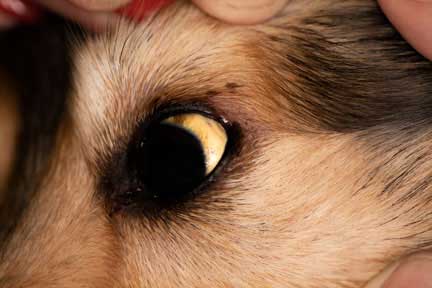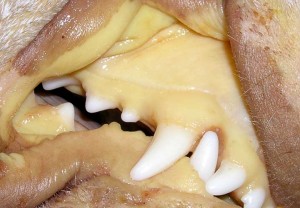Symptoms of liver disease are variable and subtle in the early stages of the problem. The classic symptoms are:
Poor appetite (anorexia)
This is a common symptom and one of the primary reasons pets are brought to us for an exam.
Weight loss
The poor appetite that occurs in liver disease eventually leads to loss of weight. Improper metabolism of fat, carbohydrates, and proteins complicates the situation also.
Polyuria/polydypsia (PU/PD)
This is excess urinating and excess drinking of water. This can occur in liver disease, although several other important diseases cause these symptoms also, notably, kidney disease, Cushing’s disease, pyometra, and diabetes mellitus (sugar diabetes).
Lethargy
Poor appetite and disruption in normal physiologic processes leads to this symptom. Anemia adds to this lethargy, along with ascites due to the discomfort it causes.
Anemia
Improper nutrition from a poor appetite, along with disease in the hepatocytes will cause this.
Light colored stool
If the biliary tree is prevented from secreting normal bile pigments into the intestine the stool will lack pigmentation and appear lighter in color.
Bleeding disorders
The normal clotting system is impaired since it depends on a healthy liver.
Distended abdomen due to ascites or hepatomegaly. If the distention is severe enough breathing might be labored from pain or the pressure on the diaphragm.
Vomiting (emesis), nausea, or diarrhea
Sometimes blood is present in the vomitus (hematemesis), especially if a gastric ulcer is present. The ulcer comes from a complex interaction of histamine, nitrogen, bile acids, Gastrin, portal hypertension, and an altered mucous membrane lining the inside of the stomach.
Pain
Due to distention of a diseased liver.
Orange colored urine
Yellow mucous membranes
This is known as icterus or jaundice. It is a yellow discoloration of any part of the body that is white. It can also be caused from a severe anemia, so it is not always liver disease that can cause this.
This dog has a subtle icterus. It can be seen as the yellowish tinge to the white part of the eye (the sclera)
The icterus in the mucous membranes (gums) of this dog is obvious
Behavioral changes-
Circling, head tilt, heap pressing, and seizures, particularly right after a meal. These might be due to excessive ammonia buildup.
In a recent study it was found that dogs with liver disease can also have high blood pressure. This is called hypertension, and should be monitored to see if therapy is needed.



